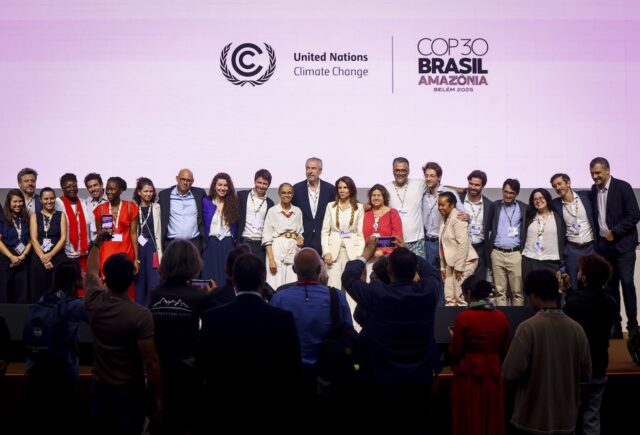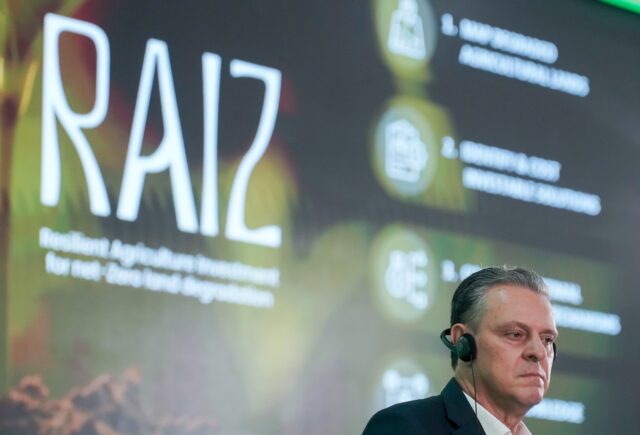A ‘blended government’ approach based on public-private partnerships can help overcome the shortcomings of the ‘vending-machine government’ model, according to the authors of ‘Bridgebuilders’, reviewed by Christopher Walker.

In brief
- “The vending-machine government model doesn’t work anymore—money goes in but, too often, results don’t come out.”
- The key to solve this problem, the authors believe, is ‘Blended Government’, through public-private partnerships.
- Much of this reads as a rebuttal of Mariana Mazzucato’s ‘Moonshot guide’ to big government to make good the failures of capitalism.
It’s always interesting when academia and business get together. Here, Professor Donald Kettl, author of ‘Escaping Jurassic Government’, partners with William Eggers, executive director of Deloitte’s Center for Government Insights.
They have a unique perspective. “The two of us have been in the business of improving government….for longer than we’re comfortable admitting” and have “witnessed a cascade of reforms that have sought to grow, shrink, devolve, privatize, and rewire government, all aimed at making the public sector more effective and efficient.”
But it’s impossible to escape “the overriding sense that, far too often, government programs just don’t work anymore”. Whether addressing homelessness, opioid abuse, crime, or immigration, the government’s promises too often fall short of its ambition.
Time to ditch vending-machine government
“We think we know why,” they tell us. “Most of government’s management fixes have been based on a traditional vending-machine model of government.” Governments identify a problem, build an organization to deal with it, and “put money in the slot”, to yield results. This “model doesn’t work anymore—money goes in but, too often, results don’t come out”.
Departments can’t change quickly enough to match increasingly complex problems that cross boundaries and demand constant rethinking. The authors point to homelessness: “Is it an economic problem? A jobs problem? A mental health problem? A drug problem? A family problem? A criminal justice problem? …the answer to each of these questions is yes.”
To solve these “wicked problems”, the authors believe in ‘Blended Government’, a partnership between government and a host of “private, non-profit, and global organizations”. The authors believe the combination of “hyperdynamic, super-complicated” policy challenges that involve blended government require complex systems, but these in turn provide the “wicked opportunities” that will attract “bridgebuilders” and the private capital they seek.
Wicked opportunities
Much of this changed mindset can be attributed to the COVID pandemic. In April 2020, the New York Times ran a sobering article asking about “How Long Will a Vaccine Really Take?” in which Dr. Anthony Fauci, no less, concluded not until the end of 2021. As the authors observe that “by any measure, Operation Warp Speed was a resounding success – a genuinely successful public-private collaboration, with tangible and important results”.
And of course “the wickedest problem” of all is climate change, with the authors concluding that “no individual, community, country, or continent can solve this problem alone”.
But the authors cast these developments as part of a wider trend for public-private mission-based transformations. Much of this reads as a rebuttal of Mariana Mazzucato’s ‘Moonshot guide’ to big government as the only solution to those wicked problems.
They even point out that NASA itself has begun purchasing its space vehicles through a competitive marketplace. For its ‘Moon and beyond’ project, for example, NASA chose seventeen different companies for 209 different partnerships.
Another interesting example is connectivity, familiar to those of us who write about Africa. Much of the US seems almost as bad. A 2021 Pew Research Center analysis concluded that 28% of those in rural areas didn’t have a high-speed internet connection, and it’s even 18% in New York City. But by “align[ing] economic and social incentives” many states have succeeded in getting Facebook (Meta) subsidiary Middle Mile to lay hundreds of miles of fiber-optic cable to connect the company’s data centres. Community connectivity is the by-product.
Why governments need capitalists
The writers marshal a lot of arguments against Mazzucato’s supposed “failure of capitalism”. One is quite simply that since the late 1980s, business R&D spending has exceeded the federal government’s. “In 2019, the commercial sector accounted for the largest shares of funding for applied research (55.0%) and development (85.5%). Just the top five “big tech” firms individually now spend as much on R&D as NASA or the Department of Energy,” they write.
Similarly, the book highlights how foundations and private individuals are investing big amounts of capital in the search for major innovations. Forbes reported that the top twenty-five US philanthropists have donated $169bn in their lifetimes. The Gates Foundation alone spends more on health issues around the world than the World Health Organization— and more than most nations.
They authors conclude that “public policies require private partners”, stressing that venture capital is unlikely to fund extremely high-risk activities, such as deep space exploration, which will “typically fall to government” but it is “skilled at funding certain early-stage innovations”.
If we can just get this partnership right, it can provide “the best foundation for strengthening democratic governance in the twenty-first century”.






